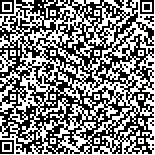| 本文已被:浏览次 下载次 |

码上扫一扫! |
|
|
|
| Comparison of determination methods for clay minerals using log data |
|
XING Pei-jun1,2,SUN Jian-meng3,WANG Ke-wen3,LI Zhao-cheng3,WU Jin-long3
|
|
(1. Institute of Geology and Geophysics, Chinese Academy of Sciences, Beijing 100029, China;2. Qinghai Oilfield Company, PetroChina, Dunhuang 736202, Gansu Province,China;3. Faculty of Geo-Resource and Information in China University of Petroleum, Dongying 257061,Shandong Province, China)
|
| Abstract: |
| In order to accurately calculate the clay minerals contents,a three-porosity calculation model of clay minerals contents without gamma spectrum data was presented based on the multiple regression of natural gamma,neutron,density,a-coustic well log data. Well log data from three wells in A Oilfield were processed by the three-porosity model and other two traditional methods proposed respectively based on ratio of cation exchange capability and hydrogen index (CEC/In ) and gamma spectrum data, and the results were compared. The results indicate that under the condition of lacking gamma spectrum data,the clay minerals contents can be calculated based on the multiple regression of the natural gamma,neutron,density ,acoustic well log data. Compared with the core analysis results,the error based on CEC/1H is the greatest,and the reliability based on three-porosity model is a litte higher than that of the method based on gamma spectrum. The three-porosity method is easy to apply and its applicability is wider than that of the CEC/IH and natural gamma spectrum analysis. |
| Key words: clay minerals natural gamma spectrum neutron density crossplot cation exchange capability hydrogen index |
|
|